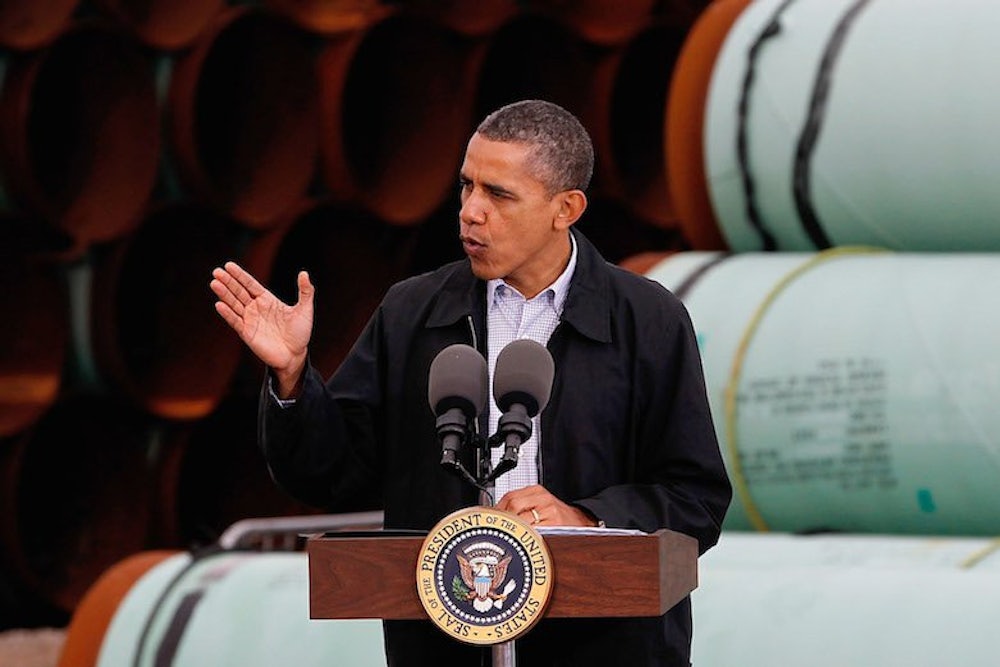The Keystone XL debate now revolves around the interpretation of a single word: “significantly.” President Barack Obama promised in 2013 to approve TransCanada’s permit for the pipeline only “if this project does not significantly exacerbate the problem of carbon pollution.” And now we're getting very mixed messages on how the administration views Keystone's role in climate change: Two of the most important actors on Keystone—the State Department and the Environmental Protection Agency—can’t agree whether or not the pipeline has a substantial impact.
A year ago, the State Department’s Environmental Impact Statement found “approval or denial of any one crude oil transport project, including [Keystone], is unlikely to significantly impact” tar sands extraction. This has proved useful to oil industry allies looking to undercut environmentalists’ central argument against the project—that it would speed up tar sands development in Canada, which would then prove disastrous for climate change efforts.
But the Environmental Protection Agency just weighed in, asking the State Department to reconsider. Their three-page letter to the State Department repeated that the tar sands represent a significant increase in greenhouse gas emissions four different times. The EPA said the decision should give more consideration to how very low oil prices play a role in Keystone's climate consequences. Last year, the State Department concluded that, in the end, the pipeline wouldn't make a difference because oil companies would simply find alternative modes of transport—like rail—to ship crude oil from the tar sands. There was a disclaimer worth noting, though: Railroad shipments are more expensive than the pipeline, and when projections of oil prices fall to between $65 to $75 per barrel, the pipeline's construction begins to make a much greater difference in tar sands production.
“Until ongoing efforts to reduce greenhouse gas emissions associated with the production of oil sands are more successful and widespread,” the EPA writes, tar sands development “represents a significant increase in greenhouse gas emissions.”
Long-term oil prices are expected to rise, but no one knows just when that will happen. In the unlikely scenario that prices stay low for a long time, the State Department has already admitted that building the pipeline would be like adding 5.7 million cars to the road every year.
